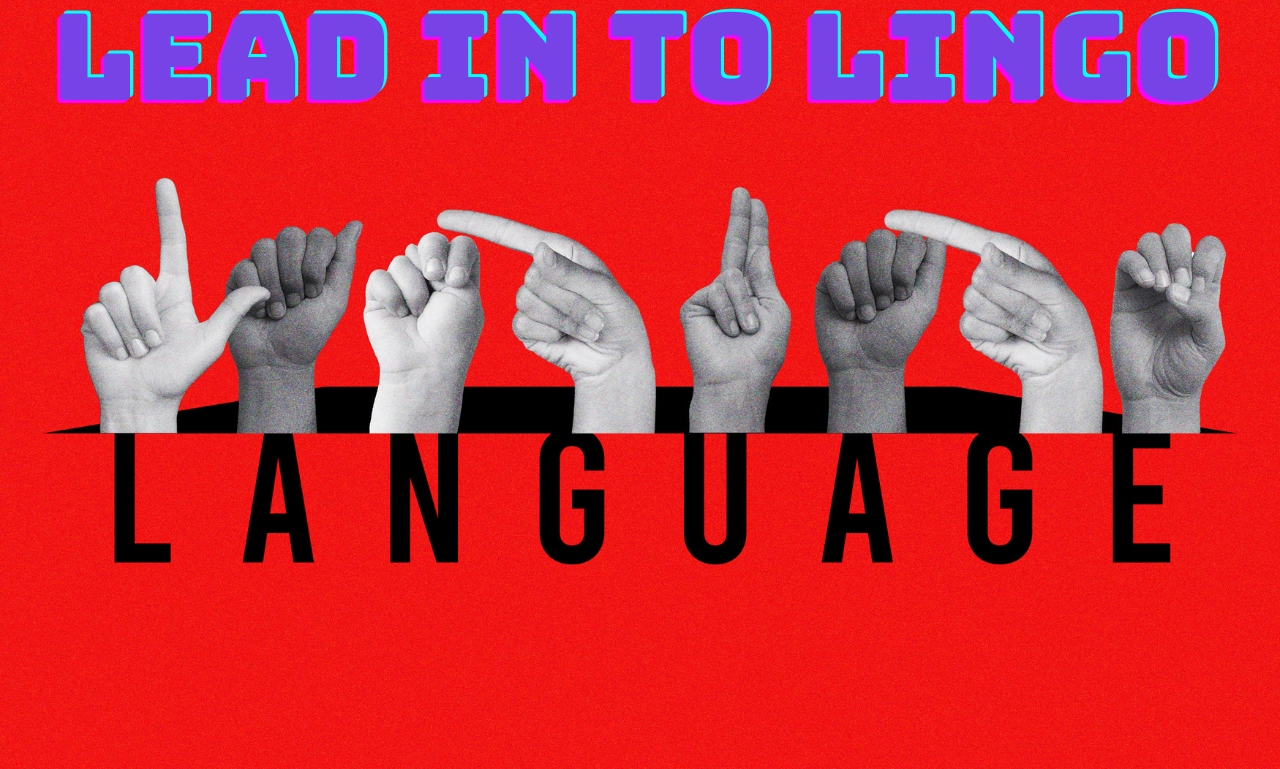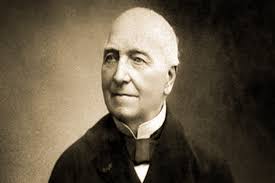Culture
Lead in to Lingo: Elevate Your Writing and Captivate Your Audience
Published
9 months agoon

Language is not just a tool for communication; it’s an art form that can elevate your writing to new heights. In this blog post, we will delve into the magic of lingo—those special words and phrases that add flair and personality to your writing. Get ready to unlock the secrets of language that will help you connect with your audience on a deeper level and leave them wanting more. Let’s lead in to lingo together!
Why is language important in writing?
Language is the heartbeat of writing, breathing life into mere words on a page. It’s the brush that paints vivid images in the reader’s mind and stirs emotions deep within their soul. With language as your ally, you have the power to transport your audience to new worlds, evoke laughter or tears, and spark thought-provoking discussions.
Effective use of language enables you to establish a unique voice and tone that set you apart from others. It allows you to craft compelling narratives, persuasive arguments, or poetic expressions that resonate with readers long after they’ve finished reading. Language is the vehicle through which ideas are shared, connections are forged, and stories are told.
In essence, language is not just a tool; it’s a gateway to endless possibilities in communication and expression. By harnessing its power in writing, you can create impactful content that leaves a lasting impression on your audience.
Understanding Lead in to Lingo
Have you ever come across a piece of writing that just captivated you from the first sentence? Chances are, it was infused with lingo—those unique words and expressions that give writing its flair and personality. But what exactly is lingo? In simple terms, lingo refers to the specialized language or vocabulary used by a particular group or community.
The purpose of incorporating lingo into your writing is to create a connection with your audience. By using familiar terminology or trendy phrases relevant to your readers, you can establish a sense of camaraderie and understanding. Lingo adds color and depth to your content, making it more engaging and relatable.
When done effectively, lingo can elevate your writing by infusing it with energy and authenticity. It helps you stand out in a sea of generic content, capturing the attention of your audience and keeping them hooked till the very end. So next time you sit down to write, consider sprinkling some lingo into your sentences—it might just make all the difference!
The Impact of Using Lingo in Writing
When it comes to writing, the impact of using lingo is undeniable. Lingo, or a specialized language unique to a particular group or field, adds depth and authenticity to your content. It creates a sense of belonging for your audience, making them feel like insiders in the conversation.
Using lingo can also enhance clarity and precision in your writing by conveying complex ideas more efficiently. It helps you connect with your readers on a deeper level, building trust and credibility. Additionally, incorporating lingo shows that you are knowledgeable about the subject matter, positioning you as an expert in your niche.
However, it’s essential to strike a balance when using lingo. Overloading your content with jargon can alienate readers who are not familiar with the terminology. Make sure to provide context or explanations when introducing new terms to ensure everyone can follow along seamlessly.
Harnessing the power of Lead in to Lingo can elevate your writing and captivate your audience in ways that conventional language may struggle to achieve.
Tips for Incorporating Lead in to Lingo into Your Writing
- When it comes to incorporating lingo into your writing, there are a few tips that can help you enhance your content and captivate your audience. Make sure to understand the context of your writing and the target audience. Tailoring the use of lingo to fit the tone and style of your piece is key.
- To effectively integrate lingo, consider sprinkling in terms sporadically throughout your content rather than overloading it all at once. This will keep readers engaged without overwhelming them.
- Additionally, stay up-to-date with current trends and slang within relevant communities or industries. Using outdated or irrelevant lingo can disconnect you from your audience.
- Experiment with different styles of lingo—whether it’s playful, professional, or niche-specific—to find what resonates best with your readers. Don’t be afraid to get creative and have fun with it!
- Always ensure that the use of lingo enhances rather than detracts from the overall message you’re trying to convey in your writing. Balancing familiarity with novelty is key to successful integration.
Common Mistakes to Avoid with Lead in to Lingo
When incorporating lead in to lingo into your writing, it’s crucial to strike a balance between being trendy and overdoing it. One common mistake writers make is using slang or jargon that may not resonate with their audience. Remember, the goal is to enhance your message, not confuse or alienate readers.
Another pitfall to avoid is forcing lingo where it doesn’t belong. Stay true to your voice and style; don’t sacrifice clarity for the sake of trying to sound hip. Additionally, be mindful of the context in which you’re using lingo – what works for a casual blog post might not be appropriate for a formal report.
Overusing trendy phrases can also dilute their impact and come across as insincere or unauthentic. Keep it fresh by mixing in different forms of lingo while staying true to your brand’s tone and identity. Always consider your audience when incorporating lingo; what resonates with one group may fall flat with another.
Examples of Successful Use of Lingo in Writing
In the world of literature, lingo can truly elevate a piece of writing and captivate readers in a unique way. Successful authors know how to wield language like a masterful artist, painting vivid images with their words. Take, for example, J.K. Rowling’s use of magical terms in the Harry Potter series – from “Muggle” to “Quidditch,” these terms transport readers into a fantastical realm that feels both familiar and enchanting.
Similarly, Ernest Hemingway’s minimalist style is another prime example of using lingo effectively. His straightforward prose cuts through the noise, delivering powerful emotions with simple yet impactful language. The term “iceberg theory” aptly describes his technique: showing only the tip while hinting at deeper meanings beneath the surface.
Contemporary writers like Chimamanda Ngozi Adichie also excel at incorporating lingo that reflects cultural nuances and diverse perspectives. By infusing her work with Igbo phrases and Nigerian vernacular, she enriches her storytelling and provides authenticity to her characters’ voices.
When done thoughtfully, integrating lingo into writing adds layers of depth and resonance that linger in readers’ minds long after they’ve turned the final page.
Conclusion
Mastering the art of incorporating lingo into your writing can significantly enhance your ability to captivate and engage your audience. Language plays a crucial role in conveying emotions, messages, and ideas effectively. By understanding the definition and purpose of lingo, you can leverage its power to create impactful content that resonates with readers.
Remember to strike a balance when using lingo; it should enhance your writing without overshadowing the main message. Avoid common mistakes, such as overusing trendy phrases or jargon that may alienate some readers. Instead, focus on integrating lingo seamlessly into your content to add depth and personality.
By following the tips outlined in this article and studying successful examples of lingo usage in writing, you can elevate your skills as a writer and connect more authentically with your audience. Embrace the power of language, experiment with different styles of expression, and watch as your writing becomes more engaging, compelling, and memorable. Lead in to lingo today and see how it transforms your approach to communication!
You may like
-


Misty Severi Journey to Becoming a Social Media Influencer
-


The Cruciality of Crucialidade: Unveiling the Importance Beyond Words
-


Unraveling the Enigma: The Intricacies of the “Cat in the Chrysalis Spoiler”
-


Unlocking the Power of Kääbntäjä: A Comprehensive Exploration
-


Unveiling the Oprekladač: Revolutionizing Translation
-


Unveiling the Power of teltlk: A Comprehensive Overview
Culture
Ferdinand Berthier: Pioneer of Deaf Culture and Advocacy
Published
2 months agoon
October 14, 2024
Ferdinand Berthier (1803–1886) is a name that holds immense significance in the history of the deaf community. A French intellectual, educator, and deaf-rights advocate, Berthier’s work laid the foundation for deaf culture, sign language recognition, and the creation of spaces where the deaf community could thrive. His contributions were diverse, spanning teaching, writing, organizing deaf associations, and fostering a sense of pride in deaf identity. Berthier’s legacy continues to inspire both the deaf and hearing communities today.
Early Life and Education
Born into Silence
Ferdinand Berthier was born on September 30, 1803, in Louhans, a small town in the Burgundy region of France. He was born deaf, though the cause of his deafness is unknown. At that time, being born deaf could be a major hindrance to one’s education and social standing. Many deaf people were isolated, lacking access to formal education or methods of communication. However, Berthier’s life took a different path thanks to his family’s determination and the existence of specialized education for deaf children.
Education at the Institut National des Jeunes Sourds
At the age of 8, Berthier’s parents enrolled him in the prestigious Institut National des Jeunes Sourds (National Institute for Deaf-Mutes) in Paris, the world’s first public school for the deaf. The school had been founded by the famed French educator Abbé Charles-Michel de l’Épée in the 18th century. At the institute, Berthier learned French sign language, the primary mode of instruction, and thrived in the rich educational environment. His teachers, including the influential deaf educator Jean Massieu and hearing teacher Roch-Ambroise Bébian, became his mentors, instilling in him a strong sense of pride in his deaf identity.
Career and Contributions
Becoming an Educator
After graduating from the Institut National des Jeunes Sourds, Berthier stayed on at the institution, where he became one of the first deaf teachers in the world. His teaching career began in 1829, and he quickly rose to prominence, advocating for the recognition of sign language as a legitimate and rich mode of communication. Berthier’s contributions were not limited to classroom teaching; he also began to focus on writing about deaf education, deaf culture, and the broader social issues faced by the deaf community.
A Champion of Deaf Rights
Ferdinand Berthier was a tireless advocate for the rights of deaf individuals, and he was particularly dedicated to the recognition and preservation of sign language. In the early 19th century, the use of sign language was under threat as oralism—the belief that deaf people should be taught solely through spoken language—began to gain prominence. Berthier staunchly defended the use of sign language, arguing that it was a natural and expressive form of communication that allowed the deaf community to engage fully in society.
His advocacy efforts were not limited to sign language. Berthier also campaigned for better employment opportunities, social integration, and education for deaf people. He worked closely with educators and philosophers to raise awareness about the capabilities of deaf individuals, challenging societal prejudices and misconceptions.
The Creation of Deaf Associations
In 1834, Berthier co-founded the first organized association for the deaf in France, known as the Société Centrale des Sourds-Muets (Central Society of Deaf-Mutes). This organization was groundbreaking, as it provided a space for deaf individuals to come together, exchange ideas, and advocate for their rights. The society also hosted social events and gatherings, fostering a sense of community and solidarity among its members.
Berthier understood the importance of building networks and creating platforms where deaf people could share their experiences and push for change. Through his leadership, the society became a model for similar organizations in other countries, helping to spark a global movement of deaf advocacy.
Writing and Intellectual Contributions
In addition to his work as an educator and advocate, Berthier was a prolific writer. He authored several important works on deaf education, the history of the deaf community, and the role of sign language in society. His writings were not only influential in shaping the direction of deaf education in France but also contributed to the broader understanding of deaf culture.
Berthier’s most notable work is his biography of Abbé de l’Épée, the founder of deaf education in France, which he wrote in 1840. In this work, Berthier honored de l’Épée’s contributions to the deaf community while also highlighting the need for continued advocacy and support for deaf education.
He also wrote extensively about his own experiences as a deaf person, shedding light on the challenges and triumphs of living in a hearing world. His writings helped to bridge the gap between the deaf and hearing communities, fostering greater understanding and empathy.
Recognition and Honors
Recognition from French Society
Ferdinand Berthier’s contributions to society did not go unnoticed. In 1849, he was awarded the prestigious Legion of Honor (Légion d’Honneur) by the French government, becoming the first deaf person to receive this recognition. This award was a significant achievement, not only for Berthier personally but also for the deaf community as a whole. It was a testament to the value of his work and a step toward greater visibility and acceptance of deaf individuals in mainstream society.
Building Deaf Pride
One of Berthier’s most enduring legacies is his role in fostering a sense of pride in deaf identity. At a time when deaf individuals were often marginalized and viewed as inferior, Berthier worked tirelessly to change these perceptions. He encouraged deaf people to embrace their identity and take pride in their language and culture. Through his teaching, writing, and advocacy, Berthier helped to build a foundation for what would later be recognized as “Deaf Culture,” a term that celebrates the shared experiences, language, and traditions of the deaf community.
Mentoring Future Leaders
As a teacher and leader within the deaf community, Berthier mentored many future deaf leaders and advocates. His influence extended far beyond his own lifetime, as his students went on to play important roles in the development of deaf education and advocacy. Through his example, Berthier inspired generations of deaf individuals to fight for their rights and work toward a more inclusive society.
Legacy
A Lasting Impact on Deaf Culture
Ferdinand Berthier’s legacy is deeply intertwined with the development of modern deaf culture. His efforts to defend and promote sign language, his advocacy for the rights of deaf individuals, and his leadership in creating spaces where the deaf community could come together all contributed to the flourishing of deaf culture in France and beyond.
Today, Berthier is remembered as a pioneer in the fight for deaf rights, and his contributions continue to inspire both deaf and hearing individuals around the world. His work laid the groundwork for future generations of deaf advocates, educators, and scholars, and his vision of a world where deaf people are valued for their abilities and contributions remains as relevant as ever.
The Influence of His Ideas Today
Berthier’s ideas about the importance of sign language and the need for deaf individuals to be active participants in their own education and advocacy continue to influence contemporary discussions about deaf rights. His belief in the power of community, education, and pride in deaf identity has been echoed in the work of modern deaf scholars and activists.
Conclusion
Ferdinand Berthier’s life was dedicated to improving the lives of deaf individuals and advocating for the recognition of sign language and deaf culture. As a teacher, writer, and leader, he challenged societal norms and fought for the rights of the deaf community at a time when their voices were often ignored. His legacy continues to resonate today, reminding us of the importance of inclusion, advocacy, and the celebration of diverse forms of communication. Through his work, Berthier helped to lay the foundation for the vibrant and thriving deaf community we see today, and his influence will be felt for generations to come.
Culture
Book32 Demystified: Everything You Need to Know About This Popular Platform
Published
8 months agoon
April 14, 2024
Are you an aspiring author looking to share your stories with the world? Or perhaps a reader on the hunt for unique and captivating books? Look no further than book32 – the dynamic online platform that has revolutionized the way we discover, publish, and enjoy literature. In this blog post, we will delve into everything you need to know about book32 – from its history and features to success stories and tips for maximizing your presence. Let’s unravel the mysteries of book32 together!
History and Growth of the Platform
book32 has an intriguing history that dates back to its humble beginnings as a platform for aspiring writers to share their stories with the world. Originally founded by a group of passionate book lovers, book32 quickly gained traction among authors seeking a user-friendly and accessible publishing tool.
As the platform evolved, it adapted to meet the changing needs of both writers and readers alike. With a focus on simplicity and innovation, book32 emerged as a go-to destination for self-publishing enthusiasts looking to bypass traditional publishing hurdles.
Over time, word spread about book32’s unique features and benefits, leading to exponential growth in its user base. Authors flocked to the platform for its easy-to-use interface, wide distribution network, and supportive community of fellow writers.
Today, book32 stands as a testament to how technology can empower creatives worldwide. Its evolution reflects the ever-changing landscape of digital publishing and sets the stage for future advancements in online storytelling platforms.
Features and Benefits of book32
Searching for a platform that offers a seamless publishing experience? Look no further than book32. This innovative platform provides authors with a wide range of features and benefits to help bring their work to life.
One of the key advantages of using book32 is its user-friendly interface, making it easy for writers to navigate and upload their content effortlessly. Authors can customize their books with various design options and templates, ensuring that their work stands out in the digital space.
book32 also offers robust marketing tools, allowing authors to promote their books effectively across multiple channels. From social media integration to email campaigns, this platform helps creators reach a broader audience and increase visibility for their work.
Additionally, book32 provides detailed analytics and reporting tools, giving authors valuable insights into reader engagement and sales performance. With real-time data at their fingertips, writers can make informed decisions to optimize their publishing strategy for success.
How to Use book32: A Step-by-Step Guide
Are you ready to dive into the world of book32 and start your publishing journey? Let’s walk through a simple step-by-step guide on how to use this popular platform.
First, create an account on book32 by signing up with your email address or social media accounts. Once registered, you can start exploring the platform and familiarize yourself with its features.
Next, prepare your manuscript in a compatible format such as PDF or Word document. Upload your file onto book32 and customize the layout and design according to your preferences.
After finalizing the formatting, set a price for your eBook or choose to offer it for free. You can also select distribution options and decide where you want your book to be available for purchase.
Promote your eBook by sharing it on social media platforms, engaging with readers through blog posts or author interviews, and utilizing book32’s marketing tools to reach a wider audience.
Monitor your sales and reviews regularly, gather feedback from readers, and continue refining your marketing strategies to maximize visibility and success on book32.
Success Stories from Authors on book32
As an online publishing platform, book32 has been a launching pad for many aspiring authors to share their stories with the world. One such success story is that of Sarah Thompson, a first-time writer who self-published her debut novel on book32 and saw it become a bestseller within weeks.
Another author, John Michaels, used book32’s user-friendly interface to reach a global audience with his series of mystery novels. His books gained traction through word-of-mouth recommendations and positive reviews from readers across different countries.
book32 also provided a platform for established authors like Emily Roberts to experiment with new genres and connect with readers in ways traditional publishing couldn’t offer. Through targeted marketing tools on the site, she was able to engage her existing fan base while attracting new followers.
These success stories highlight the diverse opportunities book32 provides for writers at various stages of their careers.
Common Misconceptions about Book 32
One common misconception about Book 32 is that it’s only for established authors. In reality, this platform welcomes writers of all levels, from beginners to experienced professionals. Whether you’re a first-time author or a seasoned writer looking for a new publishing avenue, book32 offers opportunities for everyone.
Another misunderstanding is that self-publishing on book32 means compromising on quality. However, the platform provides tools and resources to help authors create high-quality books that rival those released by traditional publishers. From editing services to cover design options, book32 ensures that your work meets professional standards.
Some may believe that success in Book 32 is based solely on luck or chance. While visibility plays a role in gaining readership, strategic marketing and engagement with your audience are key factors in building a loyal following. By actively promoting your work and interacting with readers, you can increase your chances of success on the platform.
It’s important to debunk these misconceptions surrounding book32 so that aspiring authors feel encouraged to explore the possibilities this platform offers without being deterred by false assumptions.
Comparison with Other Online Publishing Platforms
When it comes to online publishing platforms, book32 stands out among the competition for its user-friendly interface and extensive reach. Unlike some other platforms that may have limitations on distribution or charge high fees, book32 offers authors a seamless experience with global distribution options at no cost.
In comparison to traditional publishing houses, book32 provides authors with full control over their work from start to finish. Authors can easily upload their manuscripts, design covers, set prices, and track sales all in one place without the need for a literary agent or publisher intermediary.
While some platforms may prioritize established authors or genres, book32 welcomes all writers regardless of experience level or genre preference. This inclusivity allows for a diverse range of voices and stories to be shared with readers worldwide.
When weighing the pros and cons of different online publishing platforms, many authors find that book32 offers the perfect balance of accessibility, support, and freedom to bring their literary dreams to life.
Tips for Maximizing Your Presence in Book 32
To maximize your presence on book32, start by optimizing your author profile. Add a professional photo and a compelling bio that showcases your expertise and interests. Engage with readers by responding to comments and messages promptly.
Utilize book32’s marketing tools like promotions, discounts, and giveaways to attract more readers to your books. Collaborate with other authors through cross-promotions or joint events to expand your reach within the book32 community.
Regularly update your book listings with fresh content, reviews, and keywords to improve visibility in search results. Consider offering exclusive content or bonus material to incentivize readers to purchase your books.
Engage in discussions on book32 forums or groups related to your genre to connect with like-minded readers and potential fans. Network with influencers or bloggers who can help promote your work on their platforms.
Track analytics and sales data on book32 to identify trends and adjust your marketing strategies accordingly. Stay active on the platform by sharing updates about upcoming releases, events, or behind-the-scenes insights into your writing process.
Criticisms and Controversies Surrounding book
Criticisms and controversies have inevitably surrounded book, as with any popular platform. One common critique is the issue of content quality control. Some users feel that there is a lack of oversight when it comes to the publication of books on the platform, leading to concerns about the credibility and reliability of the information available.
Another point of contention revolves around royalties and pricing. Authors often debate whether the payment structure on book32 is fair and transparent, with some feeling that they are not adequately compensated for their work. This has sparked debates within the writing community about equitable compensation for digital publications.
Additionally, there have been discussions regarding copyright infringement on Book 32. Some authors claim that their work has been plagiarized or distributed without permission, raising questions about intellectual property protection on the platform. These issues highlight ongoing challenges in navigating the digital publishing landscape.
Despite these criticisms, many authors continue to find success and reach a wide audience through book32’s expansive reach and user-friendly interface. It remains important for both authors and readers to stay informed about these debates while utilizing the platform effectively for their literary endeavors.
Future of book32
The future of book32 looks promising as the platform continues to innovate and adapt to the changing landscape of online publishing. With a strong focus on user experience and author support, book is poised to attract even more writers looking to share their work with a global audience.
As technology evolves, we can expect book32 to incorporate new features like interactive storytelling tools, enhanced analytics for authors, and improved marketing resources. These advancements will empower authors to engage with readers in innovative ways and drive more visibility for their books.
Furthermore, partnerships with traditional publishers and expanded distribution channels could open up new opportunities for authors on book32. By staying ahead of industry trends and listening to the needs of both writers and readers, book32 is well-positioned for continued growth in the digital publishing space.
Conclusion
As we wrap up our exploration of book32, it’s clear that this platform offers a wealth of opportunities for authors looking to share their work with the world. From its user-friendly interface to its wide reach and diverse community, book32 provides a supportive environment for both new and experienced writers alike.
By delving into the history, features, and success stories of book, we’ve gained valuable insights into how this platform has evolved over time and impacted the lives of countless authors. The comparisons made with other online publishing platforms have highlighted some unique advantages that set Book32 apart in the industry.
While there may be criticisms and controversies surrounding Book 32, it’s important to acknowledge that no platform is without its challenges. As technology advances and reader preferences shift, it will be interesting to see how book32 continues to adapt and innovate in response to these changes.
FAQs
1. What sets book32 apart from other online publishing platforms?
book32 stands out for its user-friendly interface, extensive marketing tools, and global reach, making it a top choice for authors looking to showcase their work to a wide audience.
2. Can I publish my book on book32 if I am not an established author?
Absolutely! One of the great things about Book 32 is that it welcomes new and aspiring authors, providing them with the opportunity to share their stories with readers around the world.
3. How can I maximize my visibility on Book32?
To increase your presence on book32, make sure to optimize your author profile, engage with readers through comments and reviews, utilize promotional tools offered by the platform, and actively promote your books on social media channels.
4. Is there a cost associated with using book32?
While signing up and publishing your books on book32 is free of charge. The platform does take a percentage of royalties from sales as part of its revenue-sharing model.
5. What does the future hold for book32?
As technology continues to advance and digital platforms evolve. We can expect book to adapt and grow alongside these changes, offering even more opportunities for authors to connect with readers worldwide in innovative ways.

Step into the intriguing world of Gidler, an ancient symbol shrouded in mystery and steeped in cultural significance. Join us on a journey to uncover its origins, delve into its rich history, explore its modern uses, and learn how you can incorporate this timeless emblem into your life. Discover the hidden meanings behind Gidler and unlock its potential to add depth and symbolism to your everyday experiences.
History and Origin of Gidler
Step back in time to uncover the mysterious origins of the ancient symbol known as the Gidler. The history of Gidler is shrouded in legends and myths, with its exact beginnings lost to the sands of time. Some believe it dates back thousands of years, originating from a long-forgotten civilization that revered its symbolism.
Throughout history, Gidler has been associated with various meanings and interpretations across different cultures and regions. From representing unity and balance to symbolizing protection and strength. This enigmatic symbol continues to captivate curious minds seeking to unravel its true significance.
As civilizations rose and fell, Gidler endured, transcending generations to retain its timeless allure. Its journey through the annals of history reflects. The enduring power of symbols in shaping our collective consciousness and understanding of the world around us.
Today, as we delve into the past to unearth the secrets of Gidler’s origin, we are reminded that some mysteries are meant to be embraced rather than fully understood.
Cultural Significance
The Gidler symbol holds deep cultural significance across various civilizations throughout history. It has been revered as a powerful emblem representing unity, strength, and protection. In ancient traditions, the Gidler was often used in rituals to ward off evil spirits and bring good fortune.
Across different cultures, the Gidler symbolizes interconnectedness and harmony between individuals and the universe. Its intricate design is believed to channel positive energy and promote balance in one’s life. The cultural importance of the Gidler extends beyond borders, resonating with people from all walks of life.
In many societies, wearing or displaying the Gid-ler is seen as a way to connect with ancestral wisdom and seek guidance from higher realms. The symbol’s timeless appeal lies in its ability to transcend language barriers and speak to the universal human experience of seeking meaning and connection.
As we continue to explore our cultural heritage and spiritual beliefs, the enduring presence of the. Gidler serves as a reminder of our shared humanity and collective journey towards enlightenment.
Modern Uses of Gidler
In today’s fast-paced world, the ancient symbol of Gidler has found new life in modern applications. From trendy fashion accessories to contemporary home decor pieces, Gidler is making a splash in various industries.
In the realm of technology,. Gidler motifs are being incorporated into sleek smartphone cases and stylish laptop skins, adding a touch of mystique and uniqueness to everyday gadgets. This fusion of tradition and innovation is captivating tech-savvy individuals looking for something beyond the ordinary.
Moreover, in the fields of wellness and mindfulness,. Gidlers are being engraved onto meditation tools like crystals and incense holders, infusing spiritual energy into daily practices. The symbol’s intricate design serves as a reminder to stay grounded and connected amidst the chaos of modern life.
As more people seek meaning and authenticity in their belongings,. It’s no wonder that Gidler has become a cherished emblem with enduring relevance in our contemporary world.
How to Incorporate Gidler into Your Life
Embracing the ancient symbol of Gidler in your daily life can bring a sense of connection to history and culture. One simple way to incorporate Gidler is through jewelry—wearing a necklace or bracelet adorned with this meaningful symbol. Another idea is to integrate Gid-ler into your home decor; consider adding artwork or tapestries featuring the symbol for a touch of elegance and symbolism.
For those interested in a more personal connection, meditation or mindfulness practices centered around Gid-ler can provide a deeper understanding of its significance. You could also explore incorporating Gidler into your daily affirmations or mantras, allowing its power to inspire and uplift you throughout the day.
Incorporating Gid-ler into your life doesn’t have to be complicated; even subtle touches, like incorporating it into your fashion choices or using it as a screensaver on your electronic devices, can serve as gentle reminders of its enduring presence.
The Future of Gidler
As we look towards the future of Gidler, it’s exciting to see how this ancient symbol continues to captivate modern audiences. With its rich history and cultural significance, Gid-ler is poised to become even more prevalent in various aspects of our lives.
In the digital age, we can expect to see Gidler being incorporated into new forms of art, design, and fashion. Its timeless appeal makes it a versatile symbol that can adapt to contemporary trends while still carrying its traditional essence.
Furthermore, as people seek deeper connections with their roots and heritage, Gid-ler provides a link to ancient wisdom and symbolism that resonates across generations. Its relevance will only grow as individuals embrace the power of symbols to express identity and values.
Conclusion
Gidler is more than just a symbol; it’s a timeless representation of interconnectedness, balance, and harmony. This ancient emblem has withstood the test of time. Evolving from its historical roots to find new meaning in our modern world. As we continue to embrace Gidler in various aspects of our lives—from art and design to spirituality and personal growth—its significance only grows stronger.
Incorporating Gidler into your life can bring a sense of grounding and connection to something greater than ourselves. Whether you choose to wear it as jewelry,. Integrate it into your home decor, or simply meditate on its intricate patterns, Gid-ler serves as a reminder that we are all part of a larger cosmic tapestry.
As we look towards the future, one thing is certain: Gidl-er will continue to inspire and captivate those who seek deeper meaning in their lives. So why not embrace this ancient symbol with modern significance and see where its journey takes you?


Exploring the World of Zoos: Their Role, History, and Ethical Considerations

Sunflowers: The Radiant Wonders of the Natural World

The Role and Evolution of Pharmacies in Modern Healthcare

How Water Contamination Incidents Can Lead to Widespread Health Crises

Unlocking the Potential of Potassium Humate Fertilizer: Finding the Right Supplier

Reflecting on the Past: A Comparison of 2023-1954
Trending
-

 Health8 months ago
Health8 months agoHow Water Contamination Incidents Can Lead to Widespread Health Crises
-

 Business8 months ago
Business8 months agoUnlocking the Potential of Potassium Humate Fertilizer: Finding the Right Supplier
-

 Culture9 months ago
Culture9 months agoReflecting on the Past: A Comparison of 2023-1954
-

 entertainment9 months ago
entertainment9 months agoJudith Ivey – An Actress with Depth and Versatility
-

 entertainment9 months ago
entertainment9 months agoMadeline Wise: A Breakout Talent in Hollywood
-

 entertainment9 months ago
entertainment9 months agoThe Enchantment of Niles Garden Circus: An Insider’s Perspective
-

 Tech9 months ago
Tech9 months agoDizipal 608: A Comprehensive Guide to the Professional Document Scanner
-

 News10 months ago
News10 months agoCarla Diab: Navigating Legal Waters with Legacy, Luxury, and Legal Practice Ownership
